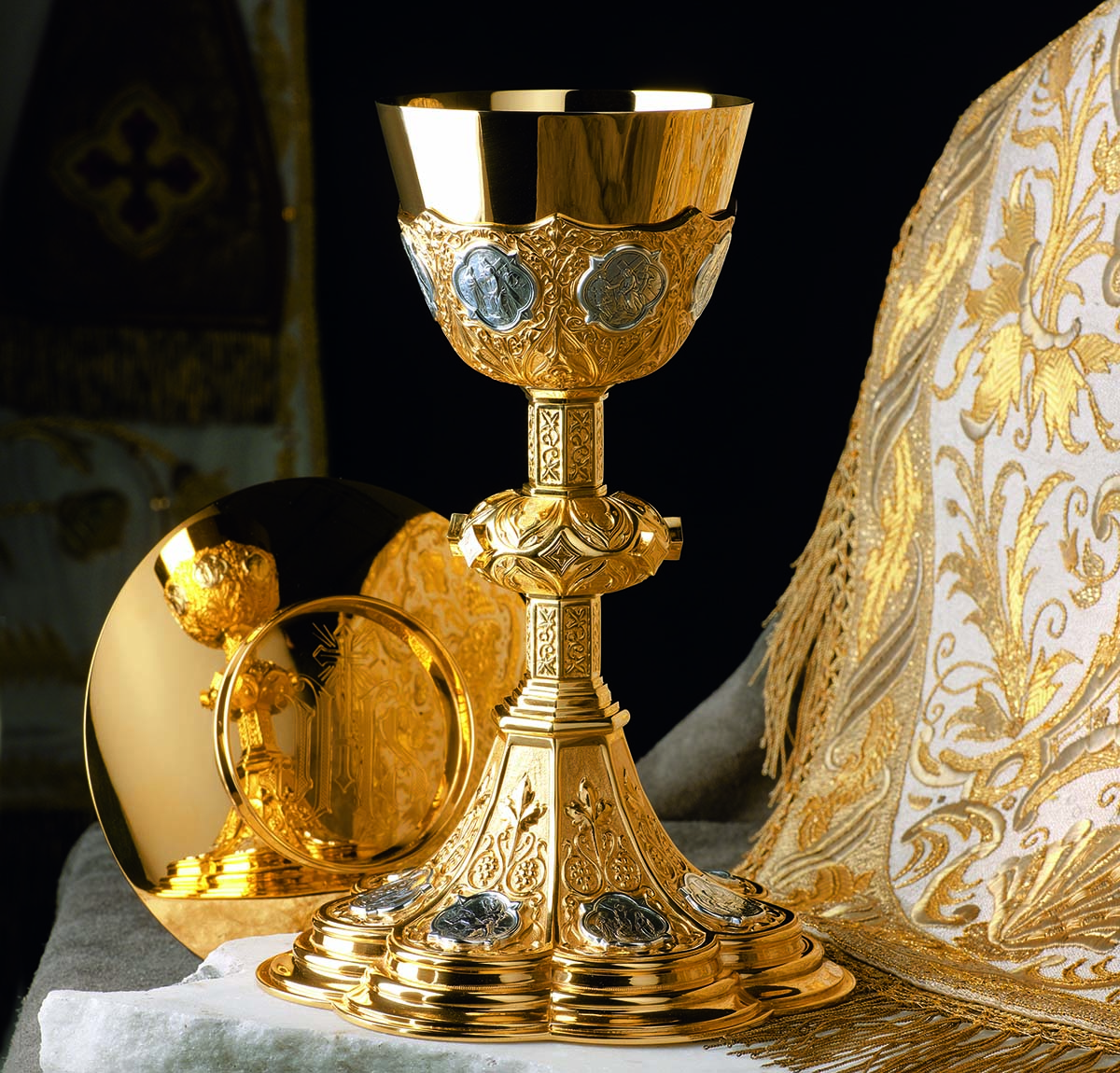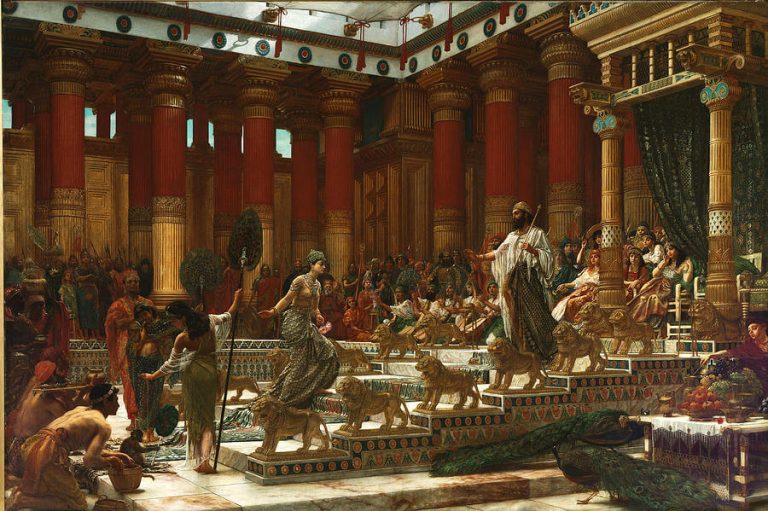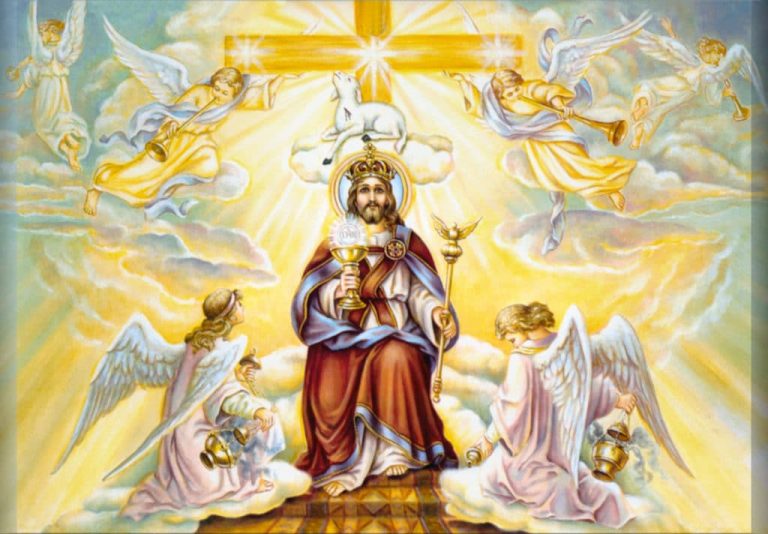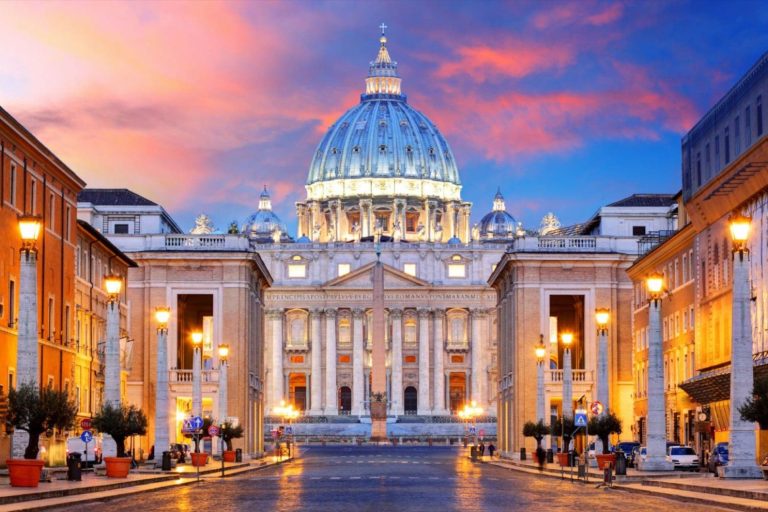Offering of bread: what it consists of and why it is done
The offering of bread is a sacred act within the religious actions of Catholicism where bread is offered as a gift to the dead, in this article you will learn more about this interesting ritual.
offering of bread
This type of ritual is well known in the Catholic Church as a process where the offering of bread is granted to spiritual souls, it is considered a sacred act within the Catholic Church but it can also be considered a profane act if it is not carried out depending on the divine and specific spirituality.
It is a very beautiful and colorful act where the Catholic community and represent their act of faith and humility through the gift and dedication, is very well seen by the high hierarchies of the church, considering the faithful the main presenters of the bread to the priests, where the complete process of the Eucharist is crystallized.
This tradition was very popular in the Middle Ages and later times, where each faithful made their own bread and even their own wine, which allowed the liturgy to be given an important spiritual value.
For Pope Francis, this rite places in the hands of the priest the offer of love and meekness on the table and altar of the Lord, which means the main sign of faith towards the Eucharistic liturgy, being the offering for the mass in its form of representation.
It is considered a ceremony that offers the fruit of man’s work on earth, proposed by God, which allows the faithful to be established as representatives of obedience to the divine word and sacrifice that manages to please God the Father Almighty.
This practice is a type of devotion carried out by the faithful in order to commemorate the sacrifice of God on the cross, which for many means an offer to Cal Christ the Redeemer in order to turn it into a Eucharistic gift that allows them to feed with their body and soul to all the faithful of the church.
The offering of bread and wine in the Eucharist
The offering or spiritual gift of bread and wine, is always accompanied within the Eucharist with prayers that are pronounced during the process, these allow God to request the acceptance of the gifts that the faithful through the church offer, invokes the exchange between the poverty and the wealth of human beings.
The prayer of the offering of the bread is also usually accompanied by the offering of the wine, representing both the flesh and the blood given in soul to the holy spirit, in one way, in order to please the Lord.
entrance monition
The monition represents in the mass, a moment of participation in order to spiritually remember the moment of living with Christ in the Eucharist, it is not really an introduction to the ceremony as many think, nor is it a descriptive summary of the biblical readings.
It is considered a situation where it is sought to invite and acclimate the followers of the Lord to the importance of the mass through brief comments that allow to encourage and draw the attention of the faithful regarding the importance of the liturgy, the notice is requested by any faithful and generally looking for a person who has a very good diction and knows how to express and motivate those present.
The process of beginning the prayer invokes a personal request from the one who makes the offering, expressing with kind words the joy that the ceremony of the mass represents and receiving the first communion, expressing gratitude to all for the accompaniment in the ceremony, everything always through prayers charged with a very high spiritual content.
Then everyone is invited to participate in the moment in which Jesus enters the life of each one, even emphasizing the non-compulsory nature of each person, that if they do not wish they can desist from participating in this offering.
To end this entry motion, help and strength are requested so as not to fade the faith of all those who participate in the offering, the Lord is asked for strength to be better every day, and through prayer to be able to help others and live as true Christians.
lectures
The relationship of the biblical scriptures that are related to the offering is established, in the sacred book there are various scriptures related to the offerings, which in the Catholic religion represents a traditional ancient spiritual cultural action, since the beginning of the existence of the biblical man, he has proposed various offerings to the lord.
The readings allow the faithful to be taken to the time when many sons of God performed acts of spiritual fidelity, for example in the book of the Acts of the Apostles a way of how the growth of the first church of Jesus was beginning is narrated, through a story of Pedro.
The story presents Peter in front of the faithful stating everything that Jesus of Nazareth did during his presence on earth, relates the kindness of the son of man towards human beings, the offer he made to all to follow him, but develops the word through the resurrection, as a way of asserting his presence and his word.
As these narratives, readings of various kinds are established, where the Catholic faithful directly relate the actions of many faithful and situations related to God and Jesus with respect to kindness and spiritual dedication, leaving material things aside and unimportant. from the earth.
readings of the day
Each reading establishes the relationship of the offering of bread and even wine based on a date of Catholic importance, every Sunday or every moment and date that represents an important situation in the Catholic calendar, is established through the readings.
They can be diverse depending on the coincidence with the Catholic calendar and the representative date, so that sometimes there can be only one reading of the day, as sometimes there are up to 5 readings, always established within the liturgy.
The symbol
In some congregations of different countries the offering of the symbol is made which represents the sign of the union of the congregation, this symbol is a kind of logo that contains some figures, such as a heart, a cross and other small figures representative of Catholicism.
The symbol is a form of manifestation of love, with a feeling of spiritual identity, based on the figure of Jesus Christ, his devotion and the spiritual presence of his mother the Virgin Mary as the representative of the women and mothers of the world.
The offering comes through prayers and short sermons where a promise of adherence to the life and spirit of the Lord is given with the commitment of faith, the readings are complemented with the symbol, the offering of bread and wine.
The bread is offered as a way of life every day dedicated to the Lord, where hope and struggle represent the line of work to obtain the necessary fruit and achieve a life full of peace, the chalice containing the wine, expresses the blood and the fire of the heart that every human being needs to face situations of violence and mistreatment of people.
other offerings
No Catholic spiritual ceremony makes individual offerings, generally various types of offering are made depending on the spiritual needs that remain in the lives of human beings. The offering is combined with the requests, which are of a spiritual, emotional and life nature rather than material, although the latter also represent importance within the Eucharistic ceremony.
for mass
Generally, this type of offering is made before the mass begins, a call is made so that the mass grants everything necessary to the faithful and gives them strength to maintain their faith and hope in the gratitude of the Lord, it is a very short ceremony and can be carried out by the priest or by some layman or faithful, who represents the ecclesiastical movement.
From the book
The book offered is the bible, which contains the sacred word of God, the most important spiritual moment in the life of Jesus and the events that marked the history of man, this book is offered as a work tool to learn more about Jesus , and surrender our soul and life to the eternal wisdom of the creator.
From the flowers
This type of natural resource is materially and descriptively offered, where the usefulness, the form of cultivation and fertilizer are explained in a kind way, they are presented on the altar and it is possible to adorn all the internal areas of the temple or church, giving it prominence and beauty, which which means an allergy from God.
They symbolize the liturgical festival and a way of learning to take care of the planet, allowing the cultivation of these beautiful flowers to give visual and spiritual joy to every human being, always remembering that it is the work and thanks of our Lord.
water offering
It is a very important offering, it is part of the source of life on the planet, it must be remembered that with it we are baptized and allowed to enter through communion on the basis of the Holy Spirit, without it life would be impossible in the planet, the way we offer gives us joy to continue being in God’s grace.
wine offering
It is generally offered together with the bread and as we have said before, it is a way of representing the blood shed by Jesus on the cross, to free us from all sins, its offering is a remembrance of the sacrifice and the teaching left by God, it is a symbol of love that the liturgy receives as much welcome, and serves as an encouragement for many people.
of the toy
This type of offering is not generalized in all Eucharistic liturgies, it is a type of material and not traditional offering, but these days it is established as a gift that helps to motivate the joy of the little ones, it is not given an importance of high liturgical level, but as one more element, in the process of giving love you did the most needy.
In the ceremony, many faithful bring used and new toys that allow the priests to donate them and deliver them to children who for a time have had limitations to be able to play and be filled with momentary joy, since according to Catholicism the joy and happiness of man it is not the material possession but the spiritual one.
economic
Similar to the previous offering, it is a type of gift that is made in church ceremonies through people who have good purchasing power, requesting the prosperity of the church in order to help those most in need.
The presence of the parents of boys and girls who attend the mass and the offering ceremony, during baptism express various donations to the entire church such as food, routes, effort and work to maintain and develop the parish church of the Lord
Salmo responsorial
This type of readings began to be practiced during the third century of our time, they represent songs that respond with a poetic and lyrical style, they are a kind of common meditation, where everyone reflects on the word and its importance within the liturgy.
They request life teachings from the creator and ask for the grace of divine spirituality to cope with life situations, their structure is based on request, acceptance and gratitude to God, leaving all the action in his hands.
Blessings, presence, gratitude and teachings form the basic structure of the responsorial Psalms, the message is transmitted by the priest before the offerings, especially that of bread, with this it is sought to establish the gratitude of the faithful towards God.
Monition at 2nd reading
The second notice is established at any time during the ceremony, after the responsorial psalm it complements the entire way in which the offering should be expressed, very similar to the entry notice seen above, it is performed by fully describing a biblical reading that encourages the development of the offering and the ecclesiastical ceremony.
petitions
Before starting to place and say the offerings, requests must be made, which is nothing more than what requests of the faithful to God, these are based on spiritual forces to protect, care for and help everything that surrounds the human being.
The request or request is made in Catholicism through various prayers, which according to the form and need that is required, is done descriptively and in a very natural way, it is not carried out with technicalities or complex words, it is only sought to reach God through a simple prayer.
Communication with God is important and when a believer requests a request, he can easily do it through prayer, in this case the offering of bread, is accompanied by requests that contain important spiritual needs and sometimes some of them. physical type.
Iglesia
Requesting the permanence and protection of the church is one of the first forms of request made by the faithful during the ceremony, it is requested by the pope, by the Bishops of the parish and the country, priests who can carry out their pastoral activity , give him strength to guide the children of God on good paths.
Prayer is structured in various ways in a way that can be understood, there is no specific pattern, it is only required to have a great spiritual faith and to have the condition of being an excellent practitioner of religion, in the end it always ends with prayer. phrase “Let us pray to the Lord” and the faithful respond “We ask you Lord”.
catechists
The requests towards the catechists place them as those faithful to the church who daily motivate and promote the faith through all their actions, they are considered the little ants of the Catholic religion, they are considered the most faithful believers who bring love and understanding to all places.
Requesting for them is a delivery of love and understanding, maintenance of faith and hope in continuing to carry the word to all places.
Fathers
Requests to parents allow them to help promote the Catholic Christian family, the basis of spirituality and permanence of man on the planet, the formation of good and safe men, who can help promote faith, is done through a request towards parents.
They are an important part of the family and are included in the petitions that the church needs to promote and express its gratitude through various offerings, along with the mother, they are the pillar of the family, and those who generally lead to bread to the house. So that our parents and relatives know how to help us to be
Kids
The request towards children takes on a lot of force at the moment of baptism, leaving the spirituality of a child in God’s hands is one of the most powerful tools, which allows us to achieve men of spiritual struggle who take faith to all places, request protection, strength and knowledge to children is a way to express gratitude to God for life.
With this type of actions in religious ceremonies, children are encouraged and taught the grace of kindness and gratitude, asking for their health manages the projection of the little ones towards the formation of spiritual values, which allows make them good men and women in the future.
Generally the offerings and petitions are carried out by the children who with this action seek to get involved in Catholic religious activities, such as baptism and communion, to understand the faith and spirituality of Jesus Christ.
Poverty
The petition towards poverty is addressed with requests towards all families with problems and limitations in their ways of life, asking for the health, well-being and prosperity of each family member, the idea is to motivate solidarity and kindness towards the neediest.
Not believers
Regardless of religious belief or denying the presence and existence of God, any person is welcome to requests for their health and well-being, the discrimination of spiritual ideas must be out of all range in the mind and spirit of any Catholic, ask for non-believers, creates an atmosphere of union, cordiality and tolerance.
parent message
Along with the offering and the petitions, there are messages that seek to give a final conclusion of spirituality to the entire ceremony, a father is always selected who arrives with the offerings of bread, grapes, wine and other things, to offer them to God in the church, this person establishes a kind of dialogue.
The message must reach all the faithful who are in the ceremony, describing and thanking everyone for the offerings given, in this message there are words of cordiality such as “solidarity”, “kindness”, “Friendship”, which are they accompany with the truth of facing the difficulties of bringing Catholic Christianity to the entire parish and national environment.
These types of messages are generally detailed during the ceremony of the first communion and baptism, it is intended to reflect the belief and the Christian faith, the message is not a prayer, it is endorsed by the priest who presides over the ceremony and helps to promote the Christian values.
farewell notice
At the end of the ceremony, the so-called farewell warning must be made, it consists of a reflective message expressing in a very cordial way the gratitude for the offerings, it also expresses this warning. The joy of having shared hope and the closeness of the faithful to God.
Messages of optimism are dedicated that encourage all those present to move forward, the conclusion of the ceremony is only part of the path that everyone must follow forever, maintaining the values of fidelity and kindness towards all people, especially towards more limited.
The conclusion of the mass, baptism or communion, is carried out with this type of encouraging messages, the faithful must leave full of joy, offer, grant and give bread, it is a Christian expression that Jesus left in his teachings, and today in day are kept as an action of divine grace.
Every believer must understand the meaning of the offering of bread, as an action that takes place in the life of any person every day, the delivery of bread to those most in need, is a way of reaching the hope of many with love and goodness.

Hello! Let me enthusiastically introduce myself as a dedicated blogger fueled by an intense passion for meticulously crafting insightful and well-researched blogs. My mission revolves around providing you, dear readers, with a veritable treasure trove of invaluable information.






